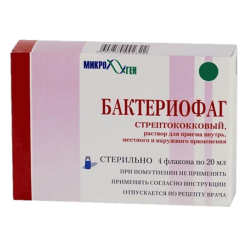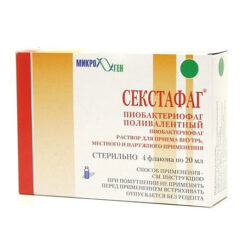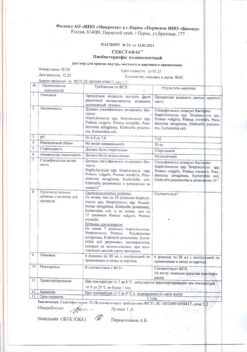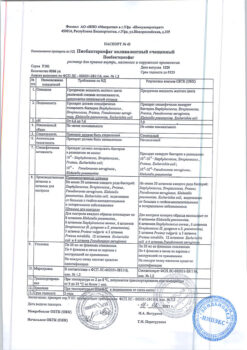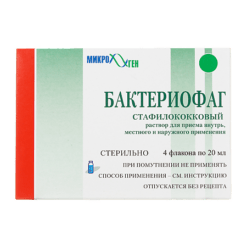No products in the cart.
Simsia, 200 mg/ml 1 ml 2 pcs
€1.00
Out of stock
(E-mail when Stock is available)
Description
In rheumatoid arthritis patients, tumor necrosis factor inhibitor (TNFα) is identified in synovial fluid and plays an important role in the progression of inflammatory, proliferative and destructive changes in the joints, which is a major manifestation of the disease.
The biological activities that have been described for TNFα include regulation of cell adhesion molecules and chemokines, major histocompatibility complex class I and II molecules, and direct activation of leukocytes. TNFα stimulates the formation of inflammatory mediators, including IL-1, prostaglandins, platelet-activating factor, and nitric oxide.
The increase in TNFα concentration plays a key role in the pathophysiological mechanisms of rheumatoid arthritis and Crohn’s disease. Certolizumab pegol selectively binds to TNFα, eliminating its role as a mediator of inflammation. In Crohn’s disease, TNFα is detected in significant concentrations in the intestinal wall, and its concentration in the intestinal contents reflects the clinical severity of the disease.
After treatment with certolizumab pegol, a decrease in blood levels of C-reactive protein (CRP) has been confirmed in Crohn’s disease patients.
Pharmacokinetics
Extraction:Certolizumab pegol is slowly absorbed from the site of administration, reaching Cmax in plasma 54-171 h after administration of a single dose of certolizumab pegol. Absolute bnoavailability is about 80% (76 to 88%).
Distribution:In patients with rheumatoid arthritis and Crohn’s disease, a population-based analysis of certolizumab pegol pharmacokinetic parameters has shown that the volume of distribution of the drug at equilibrium concentrations is estimated at 6 to 8 L.
Metabolism:The metabolism of certolizumab pegol has not been studied in clinical studies. In experimental animal studies it has been shown that excretion is mainly by the kidneys.
Elimation:PEGylation (covalent attachment of polyethylene glycol (PEG) polymers to proteins) slows the metabolism and excretion of these compounds from the body due to various mechanisms, including reduced renal clearance, proteolysis and immunogenicity. Certolizumab pegol is a Fab` fragment of an antibody conjugated to PEG. The conjugation increases the T1/2 of the Fab` fragment to a value comparable to the T1/2 of the whole antibody.
The T1/2 of certolizumab pegol when administered by IV is approximately 14 days. In healthy subjects the excretion rate of certolizumab pegol by IV administration is 9.21 ml/h to 14.38 ml/h. In patients with Crohn’s disease when administered subcutaneously, the clearance rate of certolizumab pegol was about 17 ml/h.
In subcutaneous administration of certolizumab pegol in rheumatoid arthritis, clearance was approximately 21.0 mL/h.
When comparing patients with different body weights, it was shown that patients with a body weight of 70 kg had 29% lower and 38% higher clearance of certolizumab pegol than patients with a body weight of 40 kg and 120 kg, respectively.
The Fab` fragment is a complex protein structure and its metabolism produces simple proteins and amino acids. Released PEG is rapidly excreted by the kidneys, the rate of its excretion has not been established. The plasma concentration of certolizumab pegol is proportional to the dose.
The pharmacokinetic parameters in patients with rheumatoid arthritis and Crohn’s disease do not differ from those in healthy volunteers.
There were no statistical differences in pharmacokinetic parameters in elderly patients compared to younger patients.
The concomitant use of methotrexate, other drugs, gender, and race had no significant effect on the pharmacokinetic parameters of certolizumab pegol in Crohn’s disease and rheumatoid arthritis patients. Body weight and the presence of antibodies to certolizumab pegol influenced the pharmacokinetics of the drug. Nevertheless, there was no evidence of a benefit of using higher doses in the analysis. The presence of antibodies to certolizumab pegol increased drug clearance 3.6-fold.
The clearance of certolizumab pegol is thought to be decreased in patients with renal impairment, but there are no clinical observations to recommend a specific dosing regimen for moderate to severe renal impairment.
There have been no studies of the pharmacokinetics of certolizumab pegol in patients with hepatic impairment.
Indications
Indications
Rheumatoid arthritis. Treatment of rheumatoid arthritis of moderate and high activity in adults (monotherapy or in combination with basic anti-inflammatory drugs).
Crohn’s disease. Treatment of Crohn’s disease in adults with moderate to severe severity of the disease when therapy with basic anti-inflammatory drugs is ineffective.
Pharmacological effect
Pharmacological effect
In patients with rheumatoid arthritis, tumor necrosis factor inhibitor (TNFα) is detected in the synovial fluid and plays an important role in the progression of inflammatory, proliferative and destructive changes in the joints, which is the main manifestation of the disease.
Biological activities that have been described for TNFα include regulation of cell adhesion molecules and chemokines, major histocompatibility complex class I and II molecules, and direct activation of leukocytes. TNFα stimulates the formation of inflammatory mediators, including IL-1, prostaglandins, platelet activating factor, and nitric oxide.
An increase in TNFα concentration plays a key role in the pathophysiological mechanisms of the development of rheumatoid arthritis and Crohn’s disease. Certolizumab pegol selectively binds to TNF-α, eliminating its role as a mediator of inflammation. In Crohn’s disease, TNFα is detected in significant concentrations in the intestinal walls, and its concentration in the intestinal contents reflects the clinical severity of the disease.
After treatment with certolizumab pegol in patients with Crohn’s disease, a decrease in the concentration of C-reactive protein (CRP) in the blood was confirmed.
Pharmacokinetics
Absorption: Certolizumab pegol is slowly absorbed from the injection site, reaching Cmax in plasma 54-171 hours after administration of a single dose of certolizumab pegol. Absolute bioavailability is about 80% (from 76 to 88%).
Distribution: in patients with rheumatoid arthritis and Crohn’s disease, according to a population analysis of the pharmacokinetic parameters of certolizumab pegol, it was shown that the volume of distribution of the drug when equilibrium concentrations are reached is estimated from 6 to 8 liters.
Metabolism: The metabolism of certolizumab pegol has not been studied in clinical studies. Experimental studies on animals have shown that excretion is mainly carried out by the kidneys.
Elimination: PEGylation (the covalent attachment of polyethylene glycol (PEG) polymers to proteins) slows the metabolism and elimination of these compounds from the body through various mechanisms, including decreased renal clearance, proteolysis, and immunogenicity. Certolizumab pegol is a Fab fragment of an antibody conjugated to PEG. Conjugation increases the T1/2 of the Fab fragment to a value comparable to the T1/2 of the whole antibody.
T1/2 of certolizumab pegol when administered intravenously is about 14 days. In healthy individuals, the elimination rate of certolizumab pegol with intravenous administration ranges from 9.21 ml/h to 14.38 ml/h. In patients with Crohn’s disease, when administered subcutaneously, the clearance of certolizumab pegol was approximately 17 ml/h.
When certolizumab pegol was administered subcutaneously for rheumatoid arthritis, the clearance was approximately 21.0 ml/h.
When comparing patients with different body weights, it was shown that in patients weighing 70 kg, the clearance of certolizumab pegol was 29% lower and 38% higher than in patients weighing 40 kg and 120 kg, respectively.
The Fab fragment is a complex protein structure; during its metabolism, simple proteins and amino acids are formed. Released PEG is rapidly excreted by the kidneys; the rate of its elimination has not been established. Plasma concentrations of certolizumab pegol are proportional to the dose.
Pharmacokinetic parameters in patients with rheumatoid arthritis and Crohn’s disease do not differ from the corresponding parameters in healthy volunteers.
In elderly patients, no statistical differences in pharmacokinetic parameters were obtained compared with young patients.
The concomitant use of methotrexate, other drugs, gender, and race did not have a significant effect on the pharmacokinetic parameters of certolizumab pegol in patients with Crohn’s disease and rheumatoid arthritis. Body weight and the presence of antibodies to certolizumab pegol influenced the pharmacokinetics of the drug. However, the analysis did not confirm the benefit of using higher doses. The presence of antibodies to certolizumab pegol increased the clearance of the drug by 3.6 times.
It is assumed that in patients with renal insufficiency, the clearance of certolizumab pegol is reduced, but there have been no clinical observations to recommend a special dosing regimen for the drug in moderate to severe renal insufficiency.
No studies have been conducted to study the pharmacokinetics of certolizumab pegol in patients with impaired liver function.
Active ingredient
Active ingredient
Certolizumab Pegol
Composition
Composition
active substance: certolizumab pegol 200 mg
Pregnancy
Pregnancy
Treatment with Cimzia is not recommended for pregnant women due to the lack of experience with the use of this drug during pregnancy. Women of reproductive age should use reliable methods of contraception during treatment and for at least 10 weeks after treatment. It has not been established whether certolizumab pegol is excreted in breast milk. However, it is known that immunoglobulins can pass into breast milk, so breastfeeding should be stopped during treatment with Cimzia.
Contraindications
Contraindications
Hypersensitivity to certolizumab pegol and other components included in the drug; sepsis or the risk of sepsis, including chronic or localized infections in the active stage (including tuberculosis, fungal diseases – histoplasmosis, candidiasis, aspergillosis, blastomycosis, coccidioidomycosis, nocardiosis, listeriosis, etc., pneumocystis and viral infections); moderate and severe heart failure (III-IV functional class (FC) according to NYHA (classification of the American Heart Association)), pregnancy and lactation; children’s age (up to 18 years); simultaneous use of anakinra, abatacept and etanercept.
With caution. Chronic heart failure FC I-II, immunodeficiency states, pronounced changes in the cellular composition of the blood (leukopenia, thrombocytopenia, pancytopenia, etc.), diseases predisposing to the development or activation of infections (diabetes mellitus, hepatitis, etc.), renal failure of moderate and severe severity, multiple sclerosis and other demyelinating diseases, old age.
Side Effects
Side Effects
The most serious adverse reactions were infections, cancer and heart failure. In controlled studies, the most commonly reported infections were upper respiratory tract infections (18%), skin rashes (9%), and urinary tract infections (8%).
In patients with rheumatoid arthritis in controlled studies when treated with Cimzia, adverse reactions were noted in 10.7% of cases, and in the placebo group – in 6.6%.
The most frequently observed adverse reactions were those related to the area of “infections and infestations” – in 15.5% of patients receiving the drug Cimzia, and in 7.6% of patients in the placebo group; and also – “general disorders and complications associated with the method of drug administration” in 10.0% of patients receiving the drug Cimzia, and 9.7% – placebo.
Treatment was stopped due to the development of adverse reactions in 5% of patients treated with Cimzia* and in 2.5% of patients who did not receive the drug (placebo group). The most common reasons for stopping treatment with Cimzia were: tuberculosis (0.5%), hyperthermia, urticaria, pneumonia and skin rashes (0.3%).
In Crohn’s disease in controlled studies, the most common adverse reactions were the following: upper respiratory tract infections (rhinopharyngitis, laryngitis, acute respiratory viral infection (ARVI)) in 20% of patients treated with Cimzia and in 13% of patients who did not receive the drug; infections of the urinary system (cystitis, bacteriuria) in 7% of patients receiving the drug Cimzia, and in 6% – placebo; arthralgia – in 6% of patients receiving Cimzia, and in 4% – placebo; headache – in 14.8% of patients receiving the drug Cimzia and in 13.5% – placebo, abdominal pain – in 9.3% of patients receiving the drug Cimzia, and in 8.8% – placebo.
11.3% of patients treated with Cimzia and 12.6% who did not receive the drug were excluded from the study due to severe adverse reactions. The most common reactions were: diarrhea (0.4% and 0%, respectively), abdominal pain (0.4% and 0.2%) and nausea (0.4% and 0.2%).
Adverse reactions are grouped by frequency of occurrence: very often (≥1/10); often (≥1/100, <1/10); uncommon (≥1/1000,
Infections and infestations: often – bacterial infections (abscess), viral infections (caused by herpes virus, papillomavirus, influenza); uncommon – sepsis (including multiple organ failure and septic shock), tuberculosis, fungal infections (including opportunistic).
Benign tumors, malignant neoplasms and other formations (including cysts and polyps): uncommon – solid tumors, non-melanoma skin cancer, precancerous conditions (leukoplakia of the oral mucosa, melanocytic nevus), benign tumors and cysts (including papillomas); rarely – lymphoma, gastrointestinal tumors, melanoma.
From the hematopoietic and lymphatic systems: often – eosinophilia, eosinopenia, leukopenia (lymphopenia and neutropenia); uncommon – anemia, thrombocytopenia, lymphadenopathy, thrombocytosis; rarely – pancytopenia, splenomegaly, erythrocytosis, morphologically altered leukocytes.
From the immune system: infrequently – vasculitis, SLE (systemic lupus erythematosus), hypersensitivity to the drug, psoriasis and related diseases, allergic disorders, positive reaction to autoantibodies; rarely – angioedema, sarcoidosis, serum sickness, panniculitis (including erythema nodosum).
From the endocrine system: rarely – dysfunction of the thyroid gland.
Metabolic disorders: uncommon – electrolyte disturbances, dyslipidemia, loss of appetite, changes in body weight; rarely – changes in plasma glucose concentration, hypoalbuminemia, hypoproteinemia, hemosiderosis.
Mental disorders: uncommon – anxiety (including restlessness), mood changes (and associated symptoms); rarely – suicide attempts, delirium, decreased mental activity, aggression.
From the nervous system: often – headache (including migraine), sensitivity disorders; uncommon – peripheral neuropathy, dizziness, tremor, optic neuritis; rarely – acoustic neuritis, convulsive attack, extrapyramidal disorders, trigeminal neuralgia, impaired coordination of movements and sense of balance, dysphonia, mask-like facial expression, sleep disturbance; frequency unknown – multiple sclerosis.
From the organ of vision: infrequently – impaired visual perception (including decreased visual acuity), uveitis and phlebaritis, dacryoadenitis and dacryocystitis, impaired lacrimation.
From the organ of hearing: infrequently – vertigo; rarely – hearing loss, tinnitus.
From the cardiovascular system: often – increased blood pressure; uncommon – cardiomyopathy, heart failure, coronary heart disease, arrhythmias (including atrial fibrillation), rapid heartbeat, hemorrhages, bleeding, hypercoagulation (PE, thrombophlebitis), fainting, decreased blood pressure, edema (face, extremities), ecchymoses (hematomas, petechiae); rarely – pericarditis, atrioventricular block, stroke, atherosclerosis, Raynaud’s syndrome, livedo reticularis, telangiectasia.
From the respiratory system: infrequently – pleural effusion (and associated symptoms), bronchial asthma and its manifestations, shortness of breath, congestive and inflammatory changes in the lungs, cough; rarely – interstitial changes in the lungs, pneumonitis, ulceration of the nasal mucosa.
From the digestive system: often – nausea, vomiting; uncommon – ascites, symptoms of Crohn’s disease (stenosis), ulcerative lesions and perforation (of various parts of the gastrointestinal tract), inflammation of the gastrointestinal mucosa, dyspepsia, stomatitis, symptoms of peritoneal irritation, dry mucous membrane of the mouth and throat; rarely – intestinal obstruction, dysphagia, anal fissures, increased intestinal motility.
From the hepatobiliary system: often – hepatitis, increased activity of liver enzymes; infrequently – liver cirrhosis, cholestasis, increased concentration of bilirubin in the blood plasma; rarely – cholelithiasis.
From the skin and subcutaneous fat: often – rash; uncommon – alopecia, dermatitis, eczema, dysfunction of the sweat glands, ulcerative dermatitis, increased photosensitivity, acne, areas of depigmentation, dry skin, lesions of the nail plate and nail bed; rarely – acute febrile neutrophilic dermatosis, exfoliation and desquamation of the skin, bullous dermatitis, pityriasis rosea, stretch marks, disorder of the hair structure.
From the musculoskeletal system: infrequently – arthritis, muscle dysfunction; rarely – dysfunction of the tendons.
From the urinary system: infrequently – impaired renal function, hematuria, nephrolithiasis, urethritis, cystitis; rarely – nephropathy, nephritis.
From the reproductive system: infrequently – menstrual irregularities, uterine bleeding, amenorrhea, breast dysfunction, azoospermia; rarely – premature birth, vaginal discharge, sexual dysfunction, balanitis. Others: often – hyperthermia, pain (unspecified localization), asthenia, itching (unspecified localization), skin reactions at the injection site; uncommon – formation of fistulas (without specifying the location), chills, flu-like syndrome, impaired temperature sensitivity, increased sweating at night, hot flashes; skin damage, slow wound healing.
From laboratory parameters: infrequently – increased activity of creatinine phosphokinase (CPK), alkaline phosphatase, total bilirubin, increased blood clotting time, changes in general urinalysis; rarely – increased uric acid in the blood.
Infections
In controlled studies in patients with rheumatoid arthritis, new cases of infectious diseases were observed at a rate of 0.91 patients per year in those treated with Cimzia and in those not receiving the drug at a rate of 0.72 patients per year. Infections included upper respiratory tract diseases, viral herpetic diseases, urinary tract and lower respiratory tract infections.
In controlled studies, there were more cases of serious infectious diseases in the group treated with Cimzia (0.06 patients per year) than in those not treated with the drug (0.02 patients per year). Serious infectious diseases included: tuberculosis, pneumonia, inflammation of the subcutaneous tissue, pyelonephritis. There is no increase in the risk of infections with increasing duration of use of the drug Cimzia.
The incidence of infections in controlled studies in patients with Crohn’s disease was 38.0% in those treated with Cimzia and 30.0% in patients not treated with the drug. Infectious diseases of the respiratory tract were mainly observed (20.0% in patients treated with Cimzia and 13.0% with placebo). The incidence of clinically significant serious infections in controlled studies was 3.0% among those treated with Cimzia and 1.0% with placebo. Serious infections included both bacterial and viral diseases, pneumonia, and pyelonephritis.
Tuberculosis
The use of drugs from the group of TNFα inhibitors may be accompanied by the development of activity of the tuberculosis process; when treated with Cimzia, there are also reports of severe and fatal cases of tuberculosis. In completed and ongoing clinical studies for all known indications among 5118 patients treated with Cimzia, the incidence of tuberculosis was approximately 0.61 per 100 patient years. The greatest number of cases was observed in countries where tuberculosis is endemic. Reports include cases of pulmonary and disseminated tuberculosis. In isolated cases – opportunistic infections. There have been cases of death in patients with tuberculosis and opportunistic infections.
Malignant and lymphoproliferative diseases
In controlled studies of TNF-α inhibitors, there was a trend toward an increased incidence of malignancy and lymphoma compared with patients not receiving TNF-α inhibitors.
In patients with rheumatoid arthritis, out of 2367 patients who received the drug Cimzia, lymphoma was diagnosed in 3 patients, which is approximately 2 times more often than expected on average in the population. Patients with rheumatoid arthritis, especially when the disease is active, have an increased risk of developing lymphoma.
Of 2657 patients with Crohn’s disease who received the drug Cimzia, 1 case of lymphoma was registered, and 1 case of lymphoma was observed in patients who did not receive the drug Cimzia (from the control group, which included 1319 patients).
The incidence of malignancy and lymphoma in clinical trials of Cimzia should not be compared with the results of studies of TNF-α inhibitors, and the expected prevalence of these diseases cannot be predicted when used in clinical practice. Patients with Crohn’s disease who are treated with long-term immunosuppressive drugs have an increased risk of developing lymphoma compared with the general population, even if they are not treated with TNF-α inhibitors.
Heart failure
During treatment with Cimzia, cases of onset and progression of chronic heart failure have been reported. They were moderate in nature, diagnosis was carried out during the first year of treatment with Cimzia.
Immune system
The total number of patients with rheumatoid arthritis with antibodies to the drug Cimzia, which were determined at least once, was 7.7% in phase III studies of the drug. About 1/3 of patients (2.6% of the general population) had antibodies with neutralizing activity in vitro. In patients who were treated with immunosuppressants (methotrexate), the rate of antibody formation was lower than in patients who did not receive them. Antibody formation was associated with lower plasma concentrations of Cimzia and, in some patients, with lower efficacy.
In Crohn’s disease treated with Cimzia, the total number of patients with a positive reaction to antibodies to the drug during long-term therapy was 8%, and about 6% were neutralized in vitro. There is no obvious relationship between the formation of antibodies and the effectiveness of Cimzia when used in accordance with the dosage regimen. In patients with concomitant use of immunosuppressants, the level of antibody formation was lower (3% and 11%, respectively).
Autoantibody formation
In Crohn’s disease in clinical studies, the formation of autoantibodies was observed in 4% of patients treated with Cimzia and in 2% of patients who did not receive it. In studies of TNF-α inhibitor drugs, including the use of the drug Cimzia, the appearance of autoantibodies was noted in some patients with rheumatoid arthritis. In studies of both rheumatoid arthritis and Crohn’s disease, cases of “lupus-like” syndrome have been reported infrequently. The effect of long-term treatment with Cimzia on the development of the autoimmune process has not been established.
Hypersensitivity reactions
The following hypersensitivity reactions may develop: angioedema, allergic dermatitis, itchy rash, shortness of breath, hot flashes, decreased blood pressure, skin reactions at the injection site, a feeling of malaise, pyrexia, rash, serum sickness and fainting.
Reactions at the injection site
The following symptoms were observed: erythema, itching, subcutaneous hematoma, pain. There were no cases of drug withdrawal due to the development of local reactions.
Interaction
Interaction
The simultaneous use of glucocorticosteroids, non-steroidal anti-inflammatory drugs (NSAIDs) and analgesics, antibacterial and antiviral drugs, as well as immunosuppressants (azathioprine, mercaptopurine, methotrexate) did not affect the pharmacokinetic parameters of the drug.
There may be a significant increase in the incidence of serious infections and neutropenia during combination therapy of Cimzia with anakinra, abatacept, and etanercept. Co-administration of Cimzia with these drugs has not shown clinical benefit and is not recommended.
Overdose
Overdose
The maximum tolerated dose of certolizumab pegol has not been established. With subcutaneous administration of the drug Cimzia up to 800 mg and intravenous administration of 20 mg/kg, no overdose symptoms were noted. If symptoms of overdose occur, careful monitoring of the patient’s condition and symptomatic therapy are necessary.
Storage conditions
Storage conditions
In a dry, dark place out of reach of children at a temperature of 2 to 8°C.
Shelf life
Shelf life
2 years
Manufacturer
Manufacturer
Vetter Pharma-Fertigung GmbH and Co. KG, Germany
Additional information
| Shelf life | 2 years |
|---|---|
| Conditions of storage | In a dry dark place out of the reach of children at a temperature of 2 to 8 ° C. |
| Manufacturer | UCB Farma, Belgium |
| Medication form | solution for injection |
| Brand | UCB Farma |
Related products
Buy Simsia, 200 mg/ml 1 ml 2 pcs with delivery to USA, UK, Europe and over 120 other countries.


